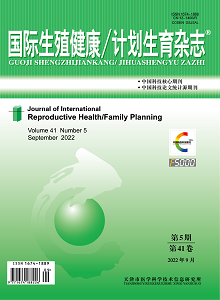Objective: To analyze the outcomes of preimplantation genetic testing (PGT) in infertile couples with sex chromosome abnormalities and to explore the risk of embryo sex chromosome abnormalities, so as to evaluate the application value of PGT in the related populations. Methods: The embryo chromosome and embryo transfer outcomes of couples with sex chromosome abnormalities treated with PGT were analyzed retrospectively. The whole genome low depth sequencing was used to analyze the alterations of chromosomal copy number after whole genome amplification of biopsy material from the blastocyst stage. In the freeze-thaw cycles, the clinical pregnancy outcomes of embryo transfer were calculated. Results: A total of 77 detectable blastocysts were obtained in 24 controlled ovulation stimulation cycles from 23 couples with sex chromosome abnormalities, including 6 couples with 47,XYY and mosaicism, 2 couples with 47,XXY and mosaicism, 4 couples with 47,XXX, 8 couples with 45,X mosaicism, 3 couples with X-chromosomal segmental aneuploidy. In 77 detectable blastocysts, 76 (98.70%) were definitively diagnosed, including 40 (52.63%) euploid, 13 (17.10%) mosaic embryos and 23 (30.26%) completely aneuploid embryos. All of abnormal embryos were X-chromosomal segmental aneuploidy in the 3 patients with X-chromosomal segmental aneuploidy; whereas a total of 3(3.95%) sex chromosome mosaic aneuploidies were found in the couples with the other sex chromosome numerical abnormality. Nine (50.00%) healthy live births were obtained during a total of 18 freeze-thaw cycles. Conclusions: The couples with sex chromosome numerical aneuploidy have a low risk of embryonic sex chromosome abnormalities, and PGT is not an essential treatment option; whereas the couples with sex chromosome segmental aneuploidy are at high risk of embryonic sex chromosome abnormalities, and PGT may be considered in combination with ovarian function profile and adequate informed consent from the patients, reducing the risk of sex chromosome abnormalities in offspring.

